If you’ve been told you have a fatty liver, you’re definitely not alone – and you’re probably wondering what that actually means for your meals. While there’s no single “fatty liver diet,” certain foods can help reduce inflammation, support your liver, and even reverse some of the damage over time. The key is keeping it realistic: simple ingredients, good flavors, and balanced meals you won’t dread eating every day.
And if you’re navigating a new diagnosis or just trying to eat in a way that supports your liver, we know how overwhelming it can get. What do you cook? How do you keep it balanced? How do you not forget half the ingredients at the store? That’s exactly why we built ReciMe. You can save all your go-to recipes, lay out a full week of meals that fit your nutrition goals, and turn them into a grocery list that’s actually useful – organized by aisle, not chaos. Grab ReciMe now, take the guesswork out of your fatty liver meal plan, and let’s get into it.


How Food Fits Into the Fatty Liver Picture
Fatty liver doesn’t always show up with fireworks. Most of the time, it’s quiet – something flagged in a routine blood test or mentioned during a scan for something else. You might not feel it, but that doesn’t mean it’s not doing damage under the surface. Left unchecked, it can lead to inflammation, scarring, and long-term liver issues that are way harder to reverse later on.
So let’s talk about food. Not because there’s a magic liver cleanse (there isn’t), but because what you eat consistently really does make a difference. You don’t need a crash diet – just a shift. Less processed stuff. More veggies and fiber. Fewer sugar bombs. Better fats. And yeah, less alcohol. Small changes that your liver actually notices. This 7-day plan walks you through what that looks like in real life – no detox teas, no weird food rules, just meals you can make without a nutrition degree.
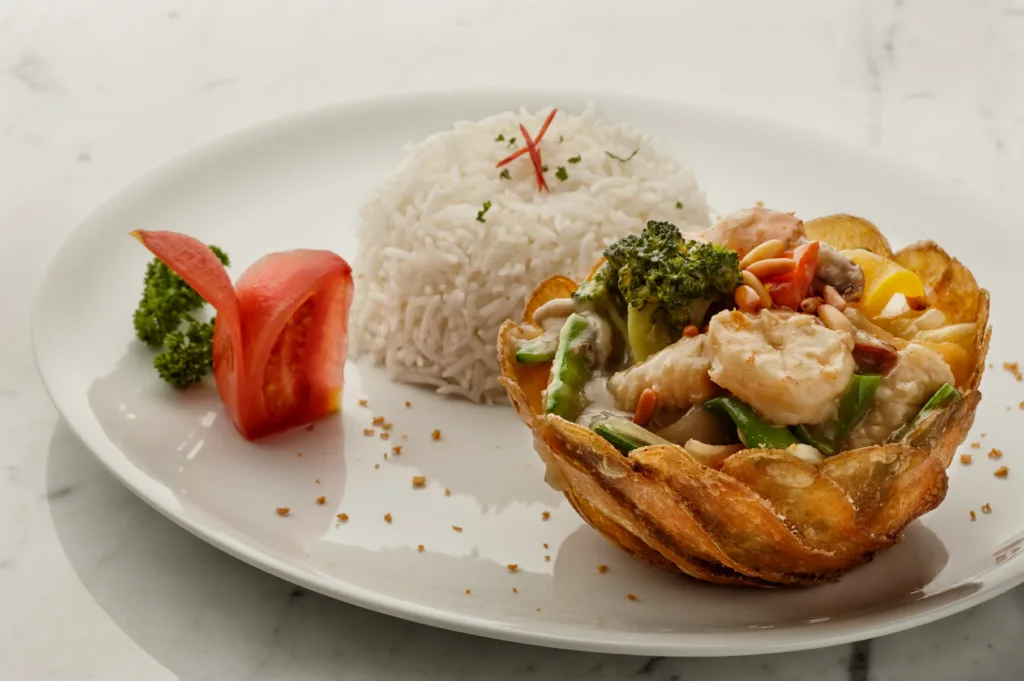
How to Build a Liver-Friendly Plate
You don’t need to count macros or memorize a long list of liver superfoods to build a solid meal – you just need a plate that makes sense. Here’s an easy way to keep things balanced when you’re figuring out what to eat:
Here’s the basic setup:
- Half your plate: Non-starchy veggies. Think spinach, broccoli, cauliflower, zucchini, peppers – fresh, frozen, whatever’s around. Roast them, steam them, sauté them in olive oil – however you’ll actually eat them.
- A quarter of your plate: Lean or plant-based protein. Grilled salmon, baked tofu, black beans, chickpeas, skinless chicken – protein helps your body rebuild and keeps you full.
- The last quarter: Whole grains or starchy veggies. Brown rice, sweet potatoes, quinoa, farro, whole grain pasta – carbs that come with fiber and keep your blood sugar steady.
Every meal doesn’t need to look like a perfect Pinterest bowl. But the more often you stick to this basic rhythm, the more your liver gets the support it needs – and you still get food that actually tastes good. Win-win.
7-Day Meal Plan for Fatty Liver
This isn’t about eating perfectly – it’s about giving your liver a bit of breathing room. The meals in this plan lean into fiber-rich veggies, lean proteins, complex carbs, and healthy fats – and step back from the things that tend to make fatty liver worse (like added sugars, processed snacks, and fried everything). It’s not a detox. It’s just good food that supports your body, keeps you full, and tastes like something you’d actually cook again.
Every day includes breakfast, lunch, dinner, and a couple of snack options. If something doesn’t fit your schedule or preferences, swap it. Use it as a base – not a rulebook.
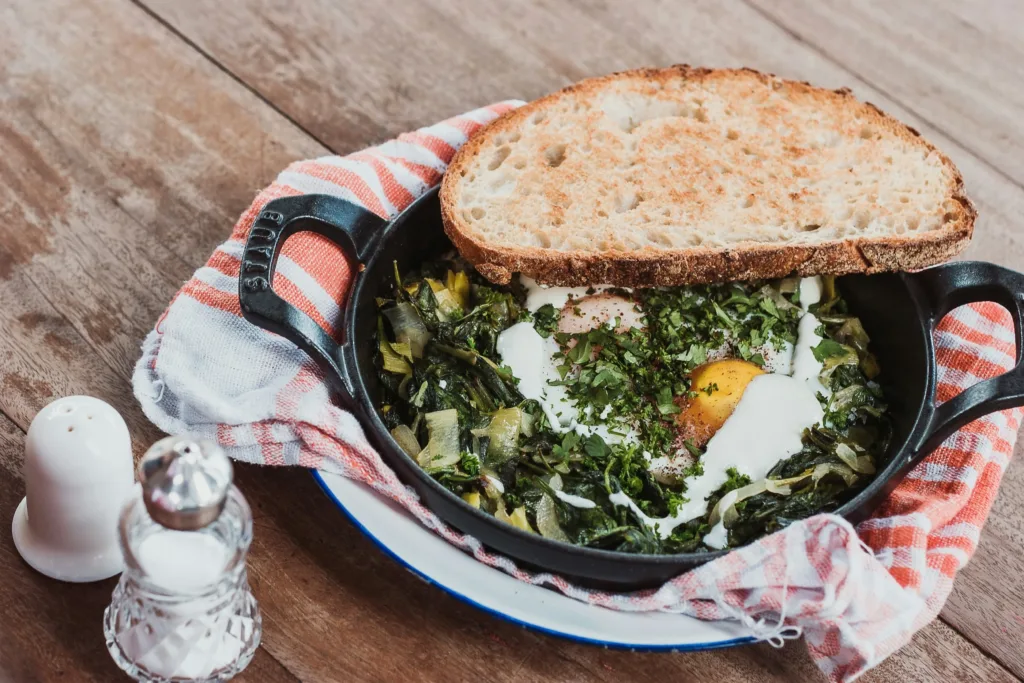
Day 1 – Light, Simple, No Fuss
Breakfast
Start your week with a veggie omelet made from 2 or 3 eggs, filled with chopped spinach and diced bell peppers. Add a small sprinkle of low-fat mozzarella to bring some creamy texture without overdoing it. Serve alongside one slice of hearty whole grain toast – something seeded or dense is ideal here, not white sandwich bread.
Lunch
Grill or bake a chicken breast and season it with garlic powder, paprika, and a pinch of salt. Serve it over a scoop of brown rice with steamed broccoli and cauliflower on the side. To round out the plate, add a quarter of an avocado – rich in healthy fats and super satisfying. A drizzle of lemon juice or olive oil over the veggies helps tie it all together.
Dinner
Bake a salmon fillet (or air fry it if that’s easier) with a bit of pepper and dried herbs. Pair it with sweet potato wedges roasted skin-on until golden, and sautéed asparagus that still has a little bite. If you’ve got the energy, toss together a quick side salad – romaine, cucumber, and tomato with a splash of balsamic vinaigrette.
Snacks
- Greek yogurt (low-fat) with berries
- Baby carrots + hummus
Day 2 – Fiber-Focused and Full
Breakfast
Prep overnight oats using rolled oats, your milk of choice (low-fat dairy or almond both work), a spoonful of chia seeds, and fresh or frozen blueberries. In the morning, stir in a scoop of Greek yogurt to thicken it up and give it a nice protein boost.
Lunch
Make a simple chicken salad by combining shredded cooked chicken with a mix of Greek yogurt and just a touch of light mayo. Add diced celery and season with garlic powder, salt, and lemon juice. Serve it with whole grain crackers or spoon it into crisp butter lettuce cups for a fresh, handheld option.
Dinner
Grill a skinless chicken breast and season with black pepper, garlic, and a pinch of rosemary. Serve with roasted sweet potato cubes and thick-cut zucchini rounds. Add a small side of unsweetened applesauce if you want something cool and slightly sweet to contrast the savory plate.
Snacks
- Sliced apple with 1-2 teaspoons of smooth nut butter
- 10-12 walnuts or 1-2 tablespoons of sunflower seeds
Day 3 – Warming and Balanced
Breakfast
Scramble two eggs and roll them into a whole grain tortilla with sautéed spinach or mushrooms. If you’ve got a few extra minutes, lightly toast the wrap in a dry pan so it’s warm and a little crispy.
Lunch
Make a pot of chicken noodle soup using low-sodium broth, diced chicken breast, carrots, onion, celery, garlic, and whole wheat noodles. It’s simple, cozy, and easy to batch cook. On the side, serve a fresh salad with romaine, cucumber, and cherry tomatoes – add a little balsamic to bring it to life.
Dinner
Bake a white potato and top it with shredded chicken and a spoonful of low-sugar BBQ sauce (look for one with under 5g sugar per serving). Add a side of steamed green beans or roasted Brussels sprouts – whatever’s easier or already in your fridge.
Snacks
- Orange slices
- Mixed unsalted nuts (almonds, walnuts, cashews)
Day 4 – Plant-Heavy and Flavorful
Breakfast
Toast two slices of whole grain bread and top them with almond butter and sliced banana. On the side, enjoy half a cup of low-fat cottage cheese mixed with fresh pineapple or diced peaches. It’s a combo that’s sweet, filling, and packed with fiber and protein.
Lunch
Cook up a turkey burger patty and serve it in a lettuce wrap or open-face on a slice of whole grain toast. Add sliced tomato, a bit of mustard, and a dill pickle if that’s your thing. On the side, roast sweet potato fries in the oven with olive oil, salt, and a dash of paprika.
Dinner
Cube firm tofu and bake or pan-sear it with low-sodium soy sauce, garlic, and ginger until golden. Serve over wild rice with sautéed broccoli, and sprinkle sesame seeds on top if you have them. It’s deeply satisfying without being heavy.
Snacks
- Carrot sticks with guacamole
- A ripe pear or kiwi
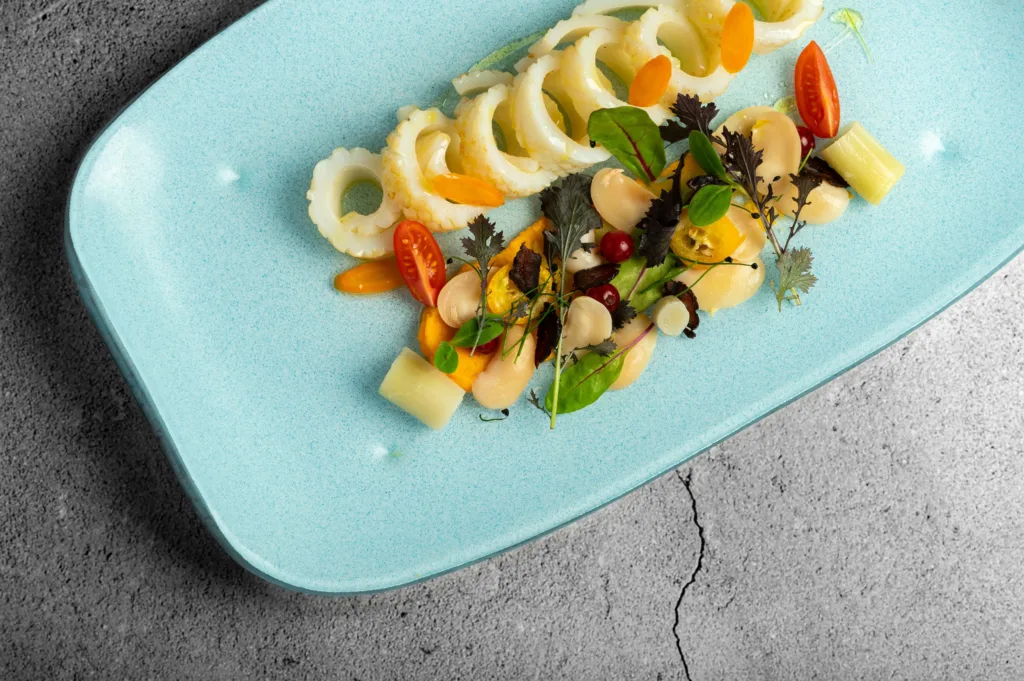
Day 5 – Mediterranean Comfort Food
Breakfast
Make a bowl of rolled oats on the stove or in the microwave, and stir in a few raisins and a sprinkle of cinnamon while it’s still hot. Top with a spoonful of plain Greek yogurt for texture and protein.
Lunch
Grab a whole grain pita and fill it with grilled chicken, sliced tomato, cucumber ribbons, and a few crumbles of low-fat feta. Finish it with a drizzle of lemon juice or tahini sauce to brighten things up.
Dinner
Grill or bake a white fish like cod or tilapia. Serve it with steamed broccoli and a side of couscous mixed with chopped parsley and lemon zest. A lemon wedge on the side helps pull it all together – simple, light, and flavorful.
Snacks
- Hard-boiled egg + whole grain crackers
- Apple slices with a few almonds
Day 6 – Batch Cook and Reuse
Breakfast
Toast a whole grain English muffin and top it with mashed avocado, lemon juice, and a pinch of chili flakes. Serve with a soft-boiled or poached egg on the side – it’s a satisfying, protein-rich way to start the day.
Lunch
Reheat leftover turkey and lentil chili (made with lentils or chickpeas for added fiber), and serve with a quick green salad dressed in olive oil and vinegar.
Dinner
Bake mini turkey meatloaf muffins using ground turkey, whole wheat breadcrumbs, egg, and spices like thyme or oregano. Serve with shredded cabbage salad – toss sliced cucumber and tomato with olive oil and a splash of lemon juice for freshness.
Snacks
- Cucumber sticks with guacamole
- Sliced apple with peanut butter
Day 7 – Keep It Simple and Tasty
Breakfast
Make oatmeal with almond milk and stir in chopped walnuts and a few raisins for sweetness. On the side, serve a small bowl of low-fat cottage cheese for added protein and staying power.
Lunch
Whip up a quick tuna salad using Greek yogurt, lemon juice, garlic powder, and chopped celery. Serve it in lettuce cups or on a whole grain bun with raw veggie sticks like snap peas, cucumber slices, or red pepper.
Dinner
Grill shrimp or scallops and serve with roasted bell peppers and onions, plus half of a baked sweet potato. For extra flavor, try seasoning the shrimp with smoked paprika or chili-lime spice.
Snacks
- Plain Greek yogurt with fresh or frozen berries
- 10-12 raw almonds
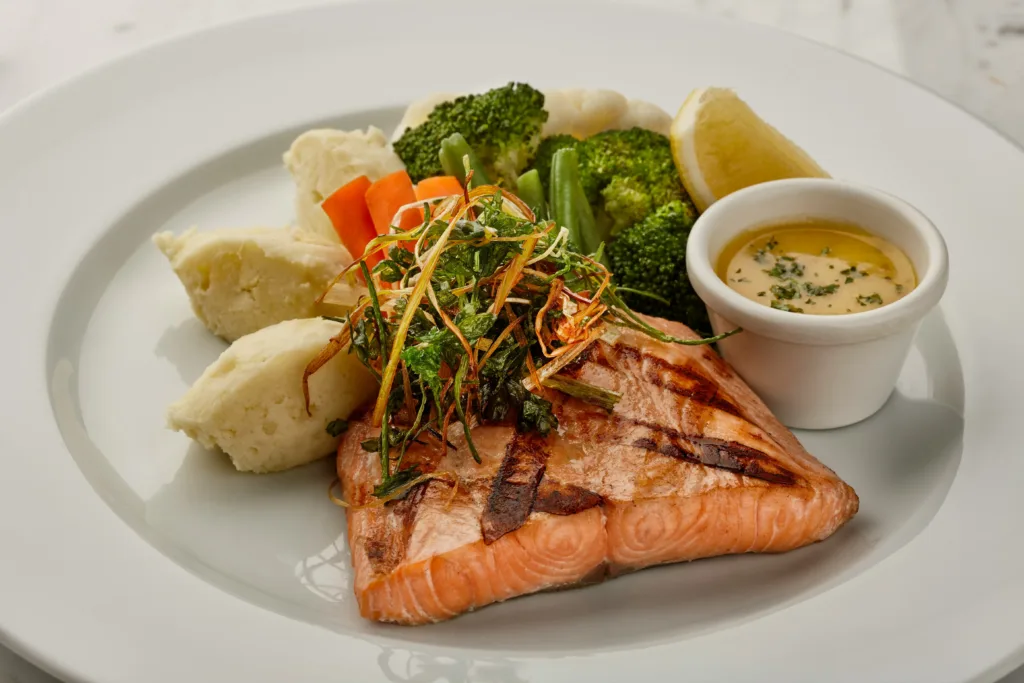
Why Diet Actually Matters for Fatty Liver
Fatty liver rarely makes a dramatic entrance. For most people, it’s quiet – something flagged during a blood test or mentioned after a scan you weren’t even expecting answers from. Maybe you feel a bit sluggish. Maybe you feel nothing at all. But even without obvious symptoms, what’s going on behind the scenes matters. When fat builds up in your liver, it starts getting in the way – slowing down how your body handles blood sugar, processes fat, and keeps toxins moving out. It’s not loud, but it’s not harmless either.
There’s no medication that “fixes” fatty liver – but food? That’s where you have real influence. Not from a crash diet or some 30-day cleanse. Just from the stuff you eat on a regular Tuesday. The more you build your meals around what your liver needs, the better it does its job. And honestly, that doesn’t look extreme. It usually means:
- More fiber from vegetables, beans, and whole grains
- Fewer added sugars (especially from drinks, sauces, and snacky stuff)
- Lean proteins like fish, tofu, or skinless chicken
- Healthy fats from avocado, nuts, seeds, and olive oil
- Less fried food and fewer ultra-processed meals
- And yep – going easy on the alcohol (or skipping it altogether)
None of this has to be perfect. It’s not about nailing every bite – it’s about showing up with meals that actually help your body do what it’s already trying to do: recover. Once you start feeding your liver what it needs, the change starts to build. Quietly. Just like it started.
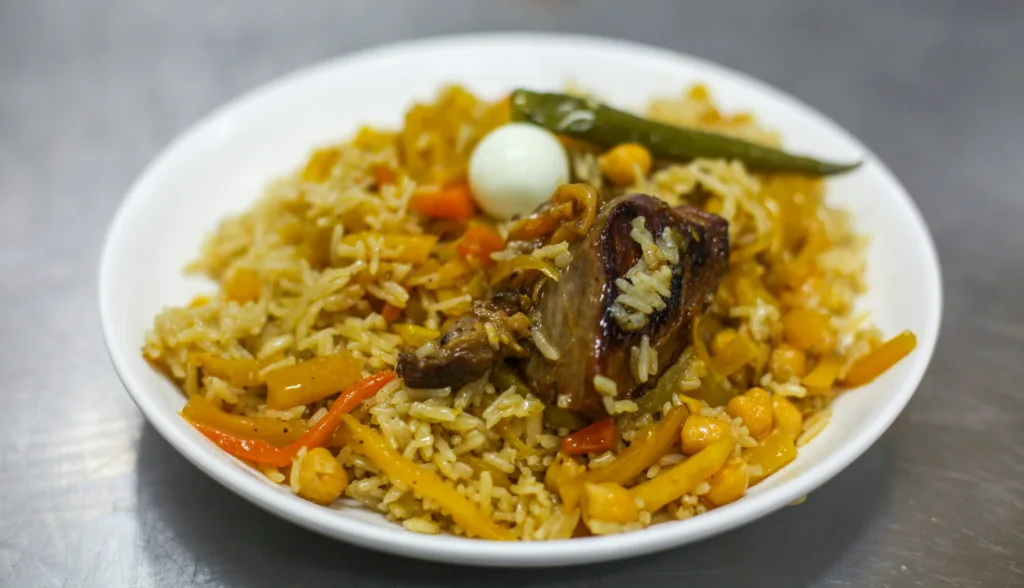
What to Expect After a Week of Liver-Friendly Eating
Seven days won’t flip everything overnight – but you might be surprised by how quickly your body starts to respond when you shift the pressure off your liver. If your usual week leans heavy on takeout, packaged snacks, or sugar-loaded drinks, this kind of reset can feel like a breather. You may notice your digestion smoothing out. Maybe your energy doesn’t tank mid-afternoon like it used to. Maybe your jeans fit a little more comfortably. Small shifts – but they matter.
Some people feel less bloated. Some just feel less “foggy.” You might sleep better. You might not crash after lunch. If your usual routine was full of salty or carb-heavy meals, you could even see a little weight drop – not because you’re dieting, but because your body’s not fighting against what you’re feeding it.
It’s worth saying: this isn’t a magic fix, and it’s not one-size-fits-all. If you’ve got other things going on (like blood sugar issues or high cholesterol), it might take longer to feel the shift. But a week of liver-friendly meals is more than just a reset – it’s proof that small, steady changes are possible. Once you feel that momentum, it’s a lot easier to keep going.
Conclusion
Fatty liver can sound like a big deal – and honestly, it is. But supporting your body through it doesn’t mean flipping your life upside down. Most of the time, it just means eating in a way that helps your liver do its job with less resistance.
That starts with real food. More fiber. Less sugar. Meals that fill you up without leaving you drained. It’s not about following a strict plan forever. It’s about building a new rhythm – one that makes you feel more in control of your energy, your choices, and your health. The more often you make that kind of meal, the more space your body has to catch up. No drama. Just progress. Plate by plate.
FAQ
1. Can I really reverse fatty liver just by changing how I eat?
In a lot of cases, yes – especially if you catch it early. When it’s still in the “simple fatty liver” stage (aka steatosis), consistent, balanced eating and weight loss can make a big difference. It’s not magic, but food really can move the needle. Still, worth checking in with your doctor to see where you’re at.
2. Do I have to cut out all fat?
Not at all. Your liver actually needs healthy fats to work properly. The trick is choosing the right ones – olive oil, nuts, seeds, avocado, fatty fish like salmon or mackerel. What you want to avoid are the deep-fried, greasy foods that make your liver work overtime.
3. Wait… coffee’s okay?
Yep – and kind of surprisingly, it might even be helpful. Some research suggests that regular coffee (especially black) can help reduce liver inflammation. Just skip the sugar-heavy creamers and blended drinks. The closer to the plain, the better.
4. How much sugar is too much?
There’s no perfect number, but here’s the general rule: go easy on the added stuff. Watch for it in drinks, sauces, breakfast bars, and snacks. Fruit is fine (seriously, eat the fruit). It’s the sneaky sugar that piles up fast.
